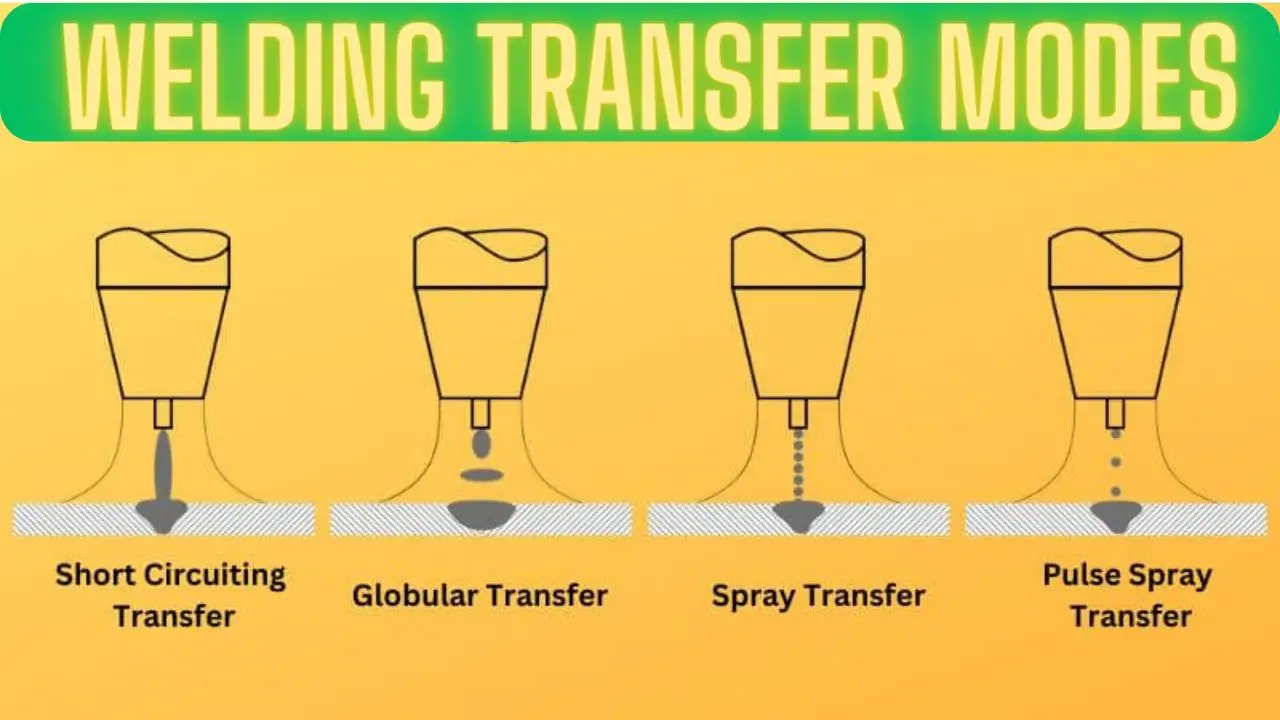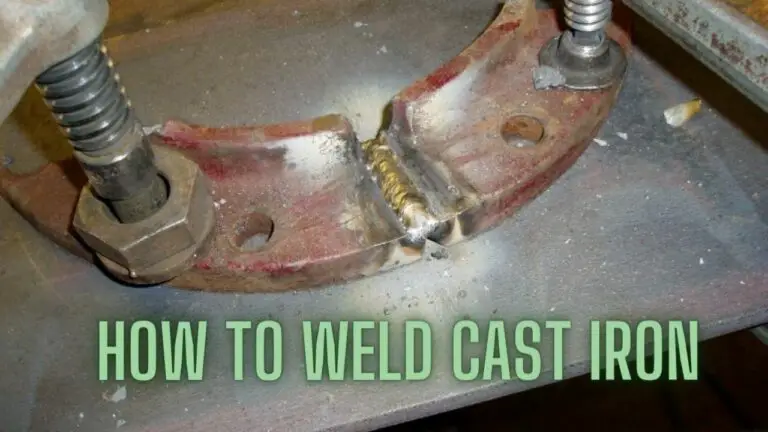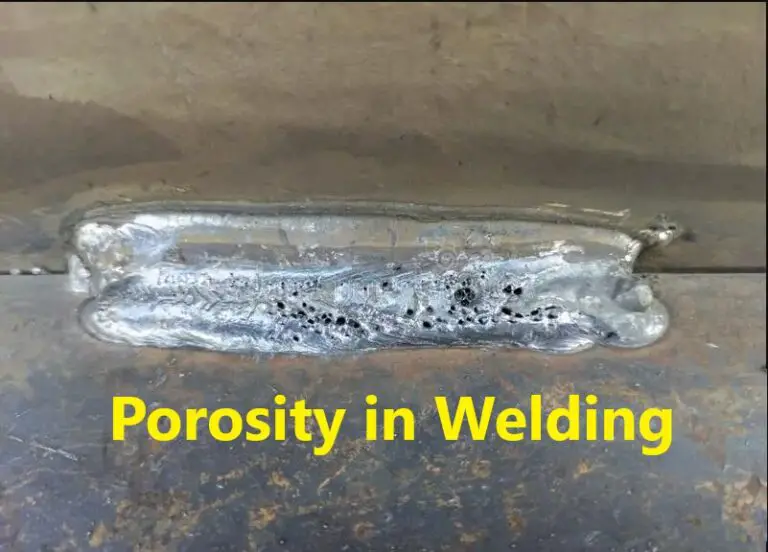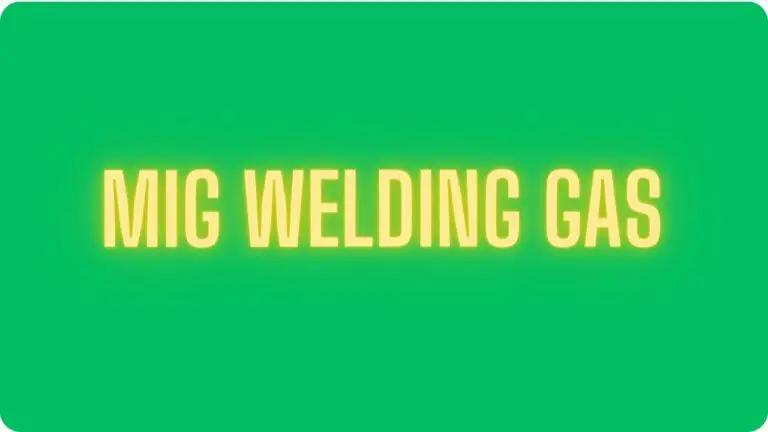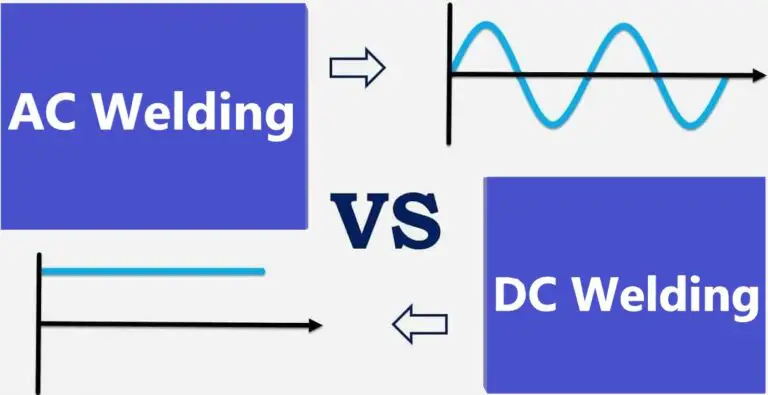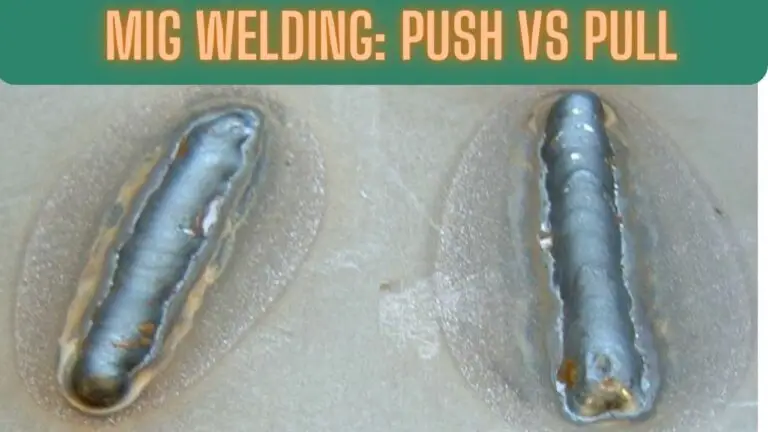Welding Transfer Modes: A Crucial Aspect of Welding
Introduction
Welding transfer modes refer to the different methods by which molten metal is transferred from the welding electrode to the workpiece during the welding process. Understanding these transfer modes is crucial for achieving optimal weld quality and efficiency. In this guide, we will explore the various welding transfer modes, their characteristics, advantages, limitations, and factors influencing their selection. Additionally, we will discuss application considerations, transition techniques between transfer modes, and future trends in welding transfer mode technology. By delving into this topic, welders and welding engineers can make informed decisions to optimize their welding processes and achieve superior results.
Understanding Welding Transfer Modes
Welding transfer modes describe the different ways in which molten metal is transferred from the welding electrode to the workpiece during the welding process. Each transfer mode has unique characteristics, including the amount of heat input, droplet size, deposition rate, and stability of the arc. The most common welding transfer modes include Short Circuit Transfer, Globular Transfer, Spray Transfer, and Pulsed Spray Transfer.
- Short Circuit Transfer: In this transfer mode, the welding current causes the electrode to make contact with the weld pool, creating a short circuit. The rapid heating and cooling cycles cause the electrode to repeatedly detach from the weld pool, resulting in small droplets transferring across the arc. Short Circuit Transfer is typically used for welding thin materials and provides low heat input and minimal spatter.
- Globular Transfer: In Globular Transfer, larger droplets of molten metal form at the end of the electrode and transfer across the arc to the weld pool. This transfer mode is characterized by a more unstable arc and higher spatter levels compared to Short Circuit Transfer. Globular Transfer is often used for welding thicker materials and provides higher deposition rates than Short Circuit Transfer.
- Spray Transfer: Spray Transfer occurs when the welding current causes the electrode to melt and transfer fine droplets of molten metal across the arc in a controlled spray pattern. This transfer mode is characterized by a stable, constricted arc and minimal spatter. Spray Transfer is commonly used for welding thicker materials at high deposition rates and provides excellent weld penetration and bead appearance.
- Pulsed Spray Transfer: Pulsed Spray Transfer combines the advantages of Spray Transfer with the control and stability of pulse welding. In this transfer mode, the welding current alternates between high peak currents to achieve spray transfer and low background currents to maintain arc stability. Pulsed Spray Transfer is suitable for welding a wide range of materials and thicknesses and offers precise control over heat input and weld bead appearance.
Understanding the characteristics and applications of each welding transfer mode is essential for selecting the appropriate mode for specific welding tasks. Factors such as material type, thickness, joint configuration, and desired weld characteristics will influence the choice of transfer mode. By mastering the fundamentals of welding transfer modes, welders can optimize their welding processes to achieve high-quality welds efficiently.
Factors Influencing Transfer Modes
Several factors influence the selection of welding transfer modes, including:
- Material Type and Thickness:
- Different transfer modes are suitable for welding various materials and thicknesses. For example, Short Circuit Transfer is commonly used for thin materials, while Spray Transfer is preferred for thicker materials.
- Material properties, such as conductivity and melting point, also influence transfer mode selection.
- Welding Position:
- Welding in different positions, such as flat, horizontal, vertical, or overhead, can affect the stability and efficiency of the transfer mode.
- Some transfer modes may be more suitable for specific welding positions due to their arc characteristics and droplet behavior.
- Electrode Type and Diameter:
- The type and diameter of the welding electrode play a significant role in determining the appropriate transfer mode.
- Larger diameter electrodes may require higher welding currents and are more likely to use Spray Transfer or Pulsed Spray Transfer modes, while smaller diameter electrodes may utilize Short Circuit Transfer.
- Welding Parameters:
- Welding parameters, including voltage, current, wire feed speed, and shielding gas flow rate, directly influence the transfer mode.
- Adjusting welding parameters allows for control over arc stability, droplet formation, and heat input, affecting the choice of transfer mode.
- Joint Configuration and Positioning:
- Joint geometry, such as groove angle, gap size, and fit-up, impacts the efficiency and effectiveness of different transfer modes.
- Welding in various positions, such as fillet welds or groove welds, may require different transfer modes to achieve optimal penetration and fusion.
- Desired Weld Characteristics:
- The desired weld characteristics, such as penetration depth, bead appearance, and spatter control, influence transfer mode selection.
- Some transfer modes offer better control over weld bead shape, penetration, and spatter formation, allowing welders to achieve specific welding objectives.
- Application Requirements:
- Consideration of the application requirements, such as welding speed, deposition rate, and weld quality standards, is essential in choosing the appropriate transfer mode.
- Some applications may prioritize productivity and efficiency, favoring high deposition rates provided by Spray Transfer or Pulsed Spray Transfer, while others may prioritize weld appearance and spatter control.
- Operator Skill and Experience:
- The skill level and experience of the welding operator influence the selection and control of welding transfer modes.
- Operators with advanced skills may be able to effectively control a wider range of transfer modes and optimize their welding processes accordingly.
By considering these factors, welders can make informed decisions about the most suitable transfer mode for their specific welding applications, ensuring optimal weld quality, productivity, and efficiency.
Advantages and Limitations of Each Transfer Mode
- Short Circuit Transfer:
- Advantages:
- Suitable for welding thin materials without excessive heat input.
- Low spatter levels result in clean welds and reduced post-weld cleanup.
- Good for positional welding due to low heat input and minimal distortion.
- Limitations:
- Limited to lower deposition rates compared to other transfer modes.
- Restricted to welding thinner materials due to lower heat input and penetration.
- Less suitable for welding in overhead or vertical positions.
- Advantages:
- Globular Transfer:
- Advantages:
- Higher deposition rates compared to Short Circuit Transfer, making it suitable for thicker materials.
- Provides good weld penetration and fusion in fillet and groove welds.
- Can be used with a wide range of welding currents and wire diameters.
- Limitations:
- Increased spatter compared to Short Circuit Transfer, requiring more post-weld cleanup.
- Less stable arc compared to Spray Transfer, leading to potential weld defects.
- Limited suitability for welding thin materials due to higher heat input and potential burn-through.
- Advantages:
- Spray Transfer:
- Advantages:
- High deposition rates enable rapid welding of thick materials with excellent penetration.
- Stable arc and minimal spatter result in clean, aesthetically pleasing welds.
- Suitable for welding in various positions, including overhead and vertical.
- Limitations:
- Requires higher welding currents and voltage settings, limiting its use in thinner materials.
- Sensitive to changes in welding parameters, requiring precise control for optimal results.
- Increased shielding gas consumption compared to other transfer modes.
- Advantages:
- Pulsed Spray Transfer:
- Advantages:
- Combines the benefits of Spray Transfer with pulse welding technology for enhanced control.
- Provides precise control over heat input, arc stability, and droplet transfer.
- Suitable for welding a wide range of materials and thicknesses with minimal spatter.
- Limitations:
- Higher equipment and setup costs compared to conventional welding processes.
- Requires more advanced welding equipment and operator training for proper implementation.
- Limited to specific applications where precise control over weld parameters is necessary.
- Advantages:
Understanding the advantages and limitations of each welding transfer mode is crucial for selecting the most suitable mode for a given welding application. By considering factors such as material thickness, joint configuration, welding position, and desired weld characteristics, welders can optimize their welding processes to achieve high-quality welds efficiently.
Selection Considerations for Welding Transfer Modes
- Material Type and Thickness:
- Consider the type of material being welded and its thickness. Thin materials may require a transfer mode with lower heat input, such as Short Circuit Transfer, while thicker materials may benefit from higher deposition rates provided by Spray Transfer or Pulsed Spray Transfer.
- Welding Position:
- Evaluate the welding position, including flat, horizontal, vertical, or overhead. Some transfer modes may perform better in certain positions due to their arc stability and droplet behavior.
- Joint Configuration:
- Assess the joint configuration, including groove angle, gap size, and fit-up. Certain transfer modes may be more suitable for specific joint designs and configurations.
- Desired Weld Characteristics:
- Determine the desired weld characteristics, such as penetration depth, bead appearance, and spatter control. Select a transfer mode that can achieve the desired weld quality and appearance while minimizing defects.
- Application Requirements:
- Consider the specific requirements of the welding application, including welding speed, deposition rate, and weld quality standards. Choose a transfer mode that meets the productivity and quality demands of the application.
- Operator Skill and Experience:
- Take into account the skill level and experience of the welding operator. Some transfer modes may require more advanced skills and precise control over welding parameters.
- Equipment and Setup:
- Assess the availability and compatibility of welding equipment, including power sources, wire feeders, and shielding gas systems. Ensure that the equipment is capable of supporting the selected transfer mode.
- Cost Considerations:
- Evaluate the cost implications of different transfer modes, including equipment costs, consumable expenses, and operational expenses. Choose a transfer mode that balances cost-effectiveness with desired weld quality and productivity.
- Welding Codes and Standards:
- Verify that the selected transfer mode complies with applicable welding codes, standards, and specifications. Ensure that the chosen mode meets the requirements for weld quality, integrity, and performance.
- Trial and Testing:
- Conduct trials and testing to evaluate the performance of different transfer modes under actual welding conditions. Assess weld quality, productivity, and efficiency to determine the most suitable mode for the application.
By carefully considering these selection considerations, welders can choose the most appropriate welding transfer mode for their specific welding tasks, ensuring optimal weld quality, productivity, and efficiency. Experimentation, testing, and continuous improvement are essential for refining welding processes and achieving superior results.
Applications of Different Transfer Modes
- Short Circuit Transfer:
- Suitable for welding thin materials, such as sheet metal and automotive body panels.
- Ideal for welding in tight spaces or positions where control over heat input is critical.
- Commonly used in industries such as automotive, HVAC, and appliance manufacturing.
- Globular Transfer:
- Used for welding medium to thick materials, including structural steel, piping, and heavy machinery.
- Provides good penetration and fusion in fillet and groove welds.
- Suitable for general fabrication, construction, and shipbuilding applications.
- Spray Transfer:
- Recommended for welding thick materials, such as pressure vessels, heavy plate, and structural components.
- Offers high deposition rates and excellent weld penetration, making it ideal for high-speed welding operations.
- Widely used in industries such as aerospace, shipbuilding, and heavy equipment manufacturing.
- Pulsed Spray Transfer:
- Versatile transfer mode suitable for welding a wide range of materials and thicknesses.
- Provides precise control over heat input, arc stability, and droplet transfer, making it suitable for critical applications.
- Used in industries requiring high-quality welds, such as automotive, aerospace, and precision manufacturing.
Each transfer mode has specific applications where it excels based on factors such as material thickness, joint configuration, welding position, and desired weld characteristics. By understanding the capabilities and limitations of each transfer mode, welders can select the most appropriate mode for their specific welding tasks, ensuring optimal weld quality, productivity, and efficiency.
Future Trends in Welding Transfer Modes
- Advanced Control Systems:
- Future transfer modes are likely to incorporate advanced control systems, including artificial intelligence (AI) and machine learning algorithms, for real-time monitoring and adjustment of welding parameters.
- These systems will enable precise control over arc stability, droplet transfer, and heat input, resulting in enhanced weld quality and productivity.
- Hybrid Transfer Modes:
- Hybrid transfer modes that combine the advantages of multiple existing modes, such as Short Circuit Transfer and Spray Transfer, may emerge.
- These hybrid modes will offer improved versatility, efficiency, and weld quality by leveraging the strengths of different transfer modes for specific welding applications.
- Adaptive Transfer Modes:
- Future transfer modes may feature adaptive capabilities that automatically adjust to changing welding conditions and workpiece geometry.
- These adaptive modes will optimize arc characteristics, droplet formation, and penetration depth based on real-time feedback from sensors and monitoring systems.
- Energy-Efficient Transfer Modes:
- There will be a greater emphasis on developing energy-efficient transfer modes that minimize heat input, reduce power consumption, and enhance process sustainability.
- These modes will help meet increasing demands for environmentally friendly welding processes while maintaining high weld quality and productivity.
- Additive Manufacturing Integration:
- Transfer modes tailored for additive manufacturing (AM) processes, such as wire-based or powder-based deposition, will become more prevalent.
- These modes will enable precise control over material deposition and layer formation in AM applications, leading to improved part quality and dimensional accuracy.
- Wireless Communication and Connectivity:
- Transfer modes with wireless communication and connectivity capabilities will facilitate seamless integration with welding automation systems and Industry 4.0 technologies.
- Welding equipment will be equipped with sensors and IoT devices for data collection, analysis, and remote monitoring of welding processes.
- Customizable Transfer Modes:
- Future transfer modes will offer greater customization options, allowing welders to tailor arc characteristics and droplet behavior to specific welding requirements.
- Customizable modes will enhance flexibility and adaptability in various welding applications, accommodating diverse materials, thicknesses, and joint configurations.
- Research and Development Initiatives:
- Continued research and development efforts in welding technology will drive innovation in transfer modes, leading to the discovery of new techniques and processes.
- Collaboration between industry stakeholders, academia, and research institutions will accelerate the development and adoption of next-generation transfer modes.
By embracing these future trends, the welding industry can anticipate significant advancements in transfer mode technology, resulting in improved weld quality, productivity, and sustainability. Continued investment in research, development, and innovation will be essential for realizing the full potential of future transfer modes in welding applications.
Welding Transfer Modes FAQS
What are welding transfer modes, and why are they important?
- Welding transfer modes refer to how molten metal is transferred from the electrode to the weld pool during the welding process. They are important because they impact weld quality, penetration, and appearance.
How does globular transfer differ from spray transfer?
- In globular transfer, molten metal droplets form on the electrode tip and fall into the weld pool due to gravity. In spray transfer, a continuous stream of tiny molten metal droplets is created and sprayed into the weld pool.
When is globular transfer typically used?
- Globular transfer is often used for welding thicker materials and when deep penetration is required. It can produce a somewhat irregular bead appearance.
What are the advantages of spray transfer in welding?
- Spray transfer is known for its stable arc, minimal spatter, and excellent weld quality. It is suitable for welding thin to thick materials and is commonly used in automotive, aerospace, and structural welding.
When is short-circuiting transfer (dip transfer) preferred?
- Short-circuiting transfer is preferred for welding thin materials, sheet metal, and when precise control and reduced heat input are necessary. It produces a controlled and smooth bead appearance.
What is pulsed transfer, and what are its applications?
- Pulsed transfer combines elements of globular and spray transfer. It is versatile and suitable for various materials and thicknesses. Pulsed transfer offers control over heat input and is often used in precision welding applications.
What is surface tension transfer, and when is it used?
- Surface tension transfer is a variation of short-circuiting transfer that relies on the surface tension of molten metal to bridge the gap between the electrode tip and the weld pool. It is used for welding aluminum and other non-ferrous metals, providing good control and bead appearance.
How do I choose the right welding transfer mode for a specific application?
- The choice of welding transfer mode depends on factors such as material type, thickness, joint configuration, and desired weld characteristics. Adjusting welding parameters, such as current, voltage, and electrode type, is essential to achieve the desired transfer mode for each application.
Can the welding transfer mode be changed during the welding process?
- Yes, skilled welders can control and change the transfer mode by adjusting welding parameters in real-time. This flexibility allows welders to adapt to different welding situations and materials.
Are there transfer modes specific to certain welding processes, like MIG, TIG, or stick welding?
- Transfer modes can vary between welding processes. For example, MIG welding often employs transfer modes like spray, globular, and short-circuiting, while TIG welding typically relies on a non-transfer mode where the electrode does not melt.
Conclusion
In summary, welding transfer modes are essential aspects of the welding process, influencing both the weld quality and appearance. Welders must have a thorough understanding of these modes and how to control them to achieve successful welds in a wide range of applications across various industries.

